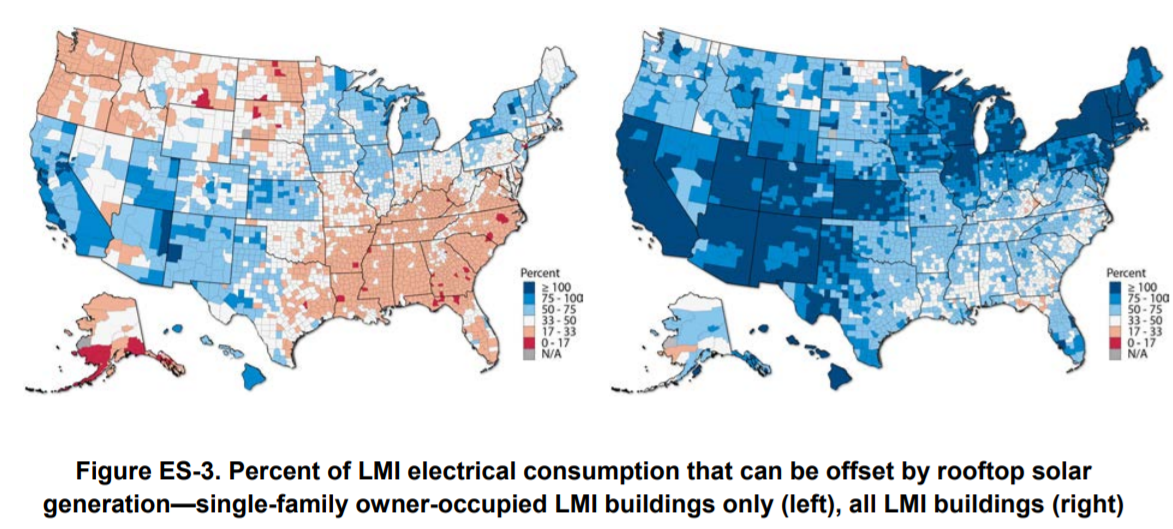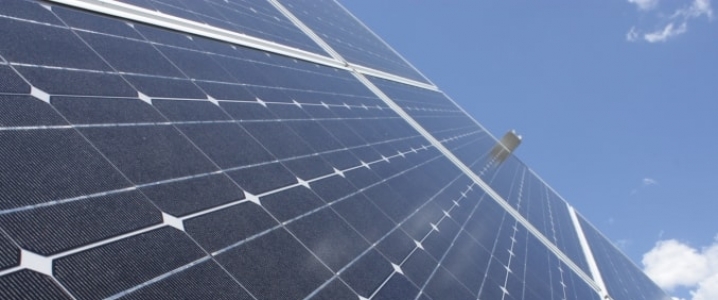If you have ever wondered how much of the electricity demand in the U.S. could be supplied by rooftop solar, a new study has the answer.
Last month the National Renewable Energy Laboratory (NREL) released the report Rooftop Solar Technical Potential for Low-to-Moderate Income Households in the United States.
As the name indicates, the study was primarily aimed at the solar photovoltaic (PV) potential on households with low-to-moderate income (LMI) levels (defined as those earning 80 percent or less of the area median income). Rooftop solar PV to date has been adopted primarily among higher-income households, but declining costs of solar PV are expanding the potential for solar outside of this demographic.
The study utilized light detection and ranging (LiDAR)–based scans of buildings as well as statistical techniques to estimate rooftop solar PV potential. The study found that of the 116.9 million residential buildings in the U.S., there are 67.2 million buildings (57 percent of the total) suitable for solar PV. Total generation potential was nearly 1,000 terawatt-hour (TWh), which is about 75 percent of residential consumption (although not necessarily without economical power storage options).
The potential for rooftop solar PV is primarily a function of the orientation of the building/roof. In cold climates, buildings are often orientated to maximize incoming solar radiation. In hotter climates, buildings and associated landscaping are frequently situated to avoid incoming solar radiation. This explains why some counties of Alaska and Montana have a higher percentage of potential LMI rooftops than counties in Arizona: Related: China’s No.1 Oil Company Cuts Saudi Crude Imports

(Click to enlarge)
Rooftop solar PV potential of LMI households by county.
However, the southwest has much higher incoming solar radiation than Alaska, which means that despite the lower percentage of applicable LMI buildings, more than 100 percent of LMI electrical consumption could be offset by LMI buildings (which include schools and places of worship):

(Click to enlarge)
Percent of LMI electrical consumption that can be offset by rooftop solar generation Related: Higher Oil Prices Could Jeopardize India’s Economy
The NREL study had been inspired by a U.S. Department of Energy (DOE) Solar Energy Technology Office announcement that the falling cost of solar energy could result in 971 GW of solar capacity nationwide, providing 33 percent of electrical generation by 2050. (For reference, current U.S. installed solar PV capacity is 50 GW).
The NREL study determined that the 33 percent target is easily technically viable among current LMI households. However, it is important to note that the study did not estimate economic viability.
ADVERTISEMENT
In order to achieve economic viability, the report suggests the deployment of models other than those commonly found today. The report concluded that coordination issues inherent to rental-occupied and multi-family buildings must be addressed, and models must ensure that rental-property owners are incentivized to install solar on their buildings.
By Robert Rapier
More Top Reads From Oilprice.com:
- The Gulf State That Needs $113 Oil
- Saudi Arabia Needs $88 Oil
- Texas Sees Unparalleled Economic Boom From Oil Prices


















In order to achieve economic viability...owners [must be] incentivized to install solar on their buildings."
Or in short, no one can afford it, so we have to raise taxes, with the resulting damage to the broader economy, and use public funds to subsidize an unnecessary and uneconomic power source.
Its also important to note that the article glosses over the non-existent power storage. Solor can power 75% of residential power, so long as the poor only use 1/4 of their power needs on cloudy days and everyone above median income doesnt mind paying for it.